This former car showroom takes its name from its location on Union Street, which was laid out in the early 19th century to link the three towns which later amalgamated to become Plymouth.
An illustration and text about Millbay Station.
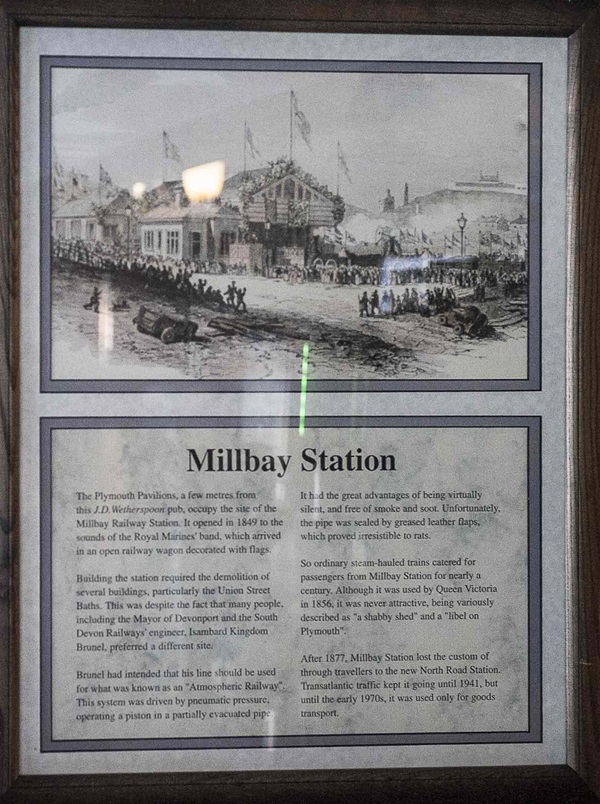
The text reads: The Plymouth Pavilions, a few metres from this J D Wetherspoon pub, occupy the site of the Millbay Railway Station. It opened in 1849 to the sounds of the railway wagon decorated with flags.
Building the station required the demolition of several buildings, particularly the Union Street Baths. This was despite the fact that many people, including the mayor of Devonport and South Devon Railways’ engineer, Isambard Kingdom Brunel, preferred a different site.
Brunel had intended that his line should be used for what was known as an ‘Atmospheric Railway’. This system was driven by pneumatic pressure, operating a piston in a particularly evacuated pipe.
It had the great advantage of being virtually silent, and free of smoke and soot. Unfortunately, the pipe was sealed by greased leather flaps, which proved irresistible to rats.
So ordinary steam-hauled catered for passengers from Millbay station for nearly a century. Although it was used by Queen Victoria in 1856, it was never attractive, being variously described as “a shabby shed” and a “libel on Plymouth”.
After 1877, Millbay Station lost the custom of through travellers to the new North Road Station. Transatlantic traffic kept it going until 1941, but until the early 1970s, it was used only for goods transport.
Prints and text about Sir Joshua Reynolds.
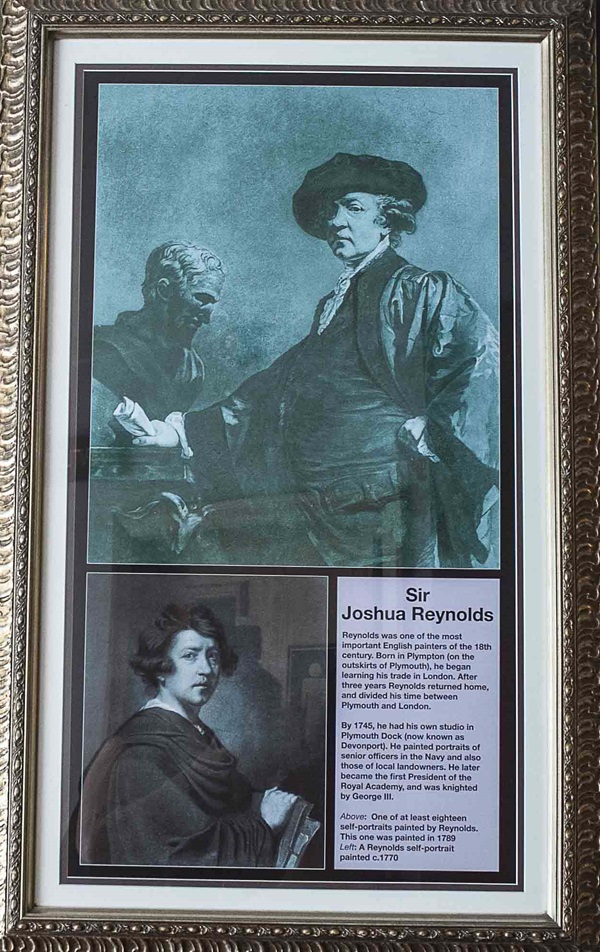
The text reads: Reynolds was one of the most important English painters of the 18th century. Born in Plymouth (on the outskirts of Plymouth), he began learning his trade in London after three years Reynolds returned home, and divided his time between Plymouth and London.
By 1745, he had his own studio in Plymouth Dock (now known as Devonport). He painted portraits of senior officers in the Navy and also those of local landowners. He later became the first president of the Royal Academy, and was knighted by George III.
Above: One of at least eighteen self-portrait painted, c1770.
Illustrations and text about William Bligh.

The text reads: William Bligh was born on 9 September 1754, in Plymouth. He went to sea as a cabin boy and in 1770 joined the Royal Navy. Between 1776 and 1780 he was master of the resolution on Captain Cook’s third voyage. In 1787 Bligh was sent to Tahiti with the Bounty to collect breadfruit plants to feed West Indian slaves. Famously, the crew, led by Fletcher Christian, mutinied, and cast Bligh adrift with 18 others. Six weeks and 3,618 miles later, Bligh found landfall at Timor in the East Indies. Bligh fought the French under Nelson, who commended him. In 1801 he was selected as a fellow of the Royal Society for his contributions to navigation and natural history.
Photographs and text about Scott of the Antarctic.
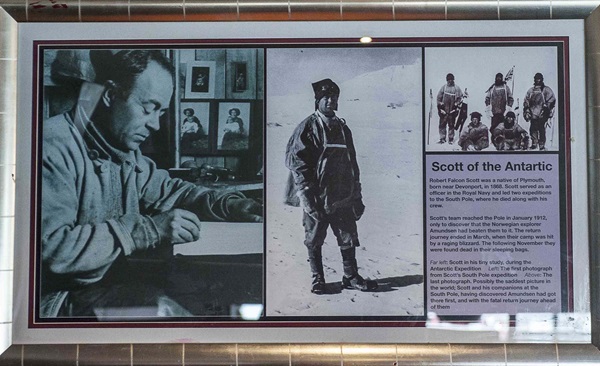
The text reads: Robert Falcon Scott was a native of Plymouth, born near Devonport, in 1868. Scott served as an officer in the Royal Navy and led two expeditions to the South Pole, where he died along with his crew.
Scott’s team researched the Pole in January 1912, only to discover that the Norwegian explorer Amundsen had beaten them to it. The return journey ended in March, when their camp was hit by a raging blizzard. The following November they were found dead in their sleeping bags.
Far left: Scott in his tidy study, during the Antarctic Expedition
Left: The first photograph from Scott’s South Pole expedition
Above: The last photograph. Possibly the saddest picture in the world; Scott and his companions at the South Pole, having discovered Amundsen had got there first, and with the fatal return journey ahead of them.
A photograph of Plymouth city centre, 1939, before the Blitz.
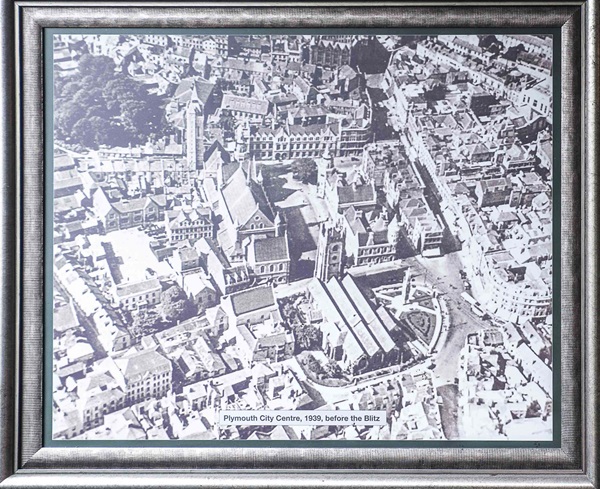
A photograph of the Guildhall after the Blitz.
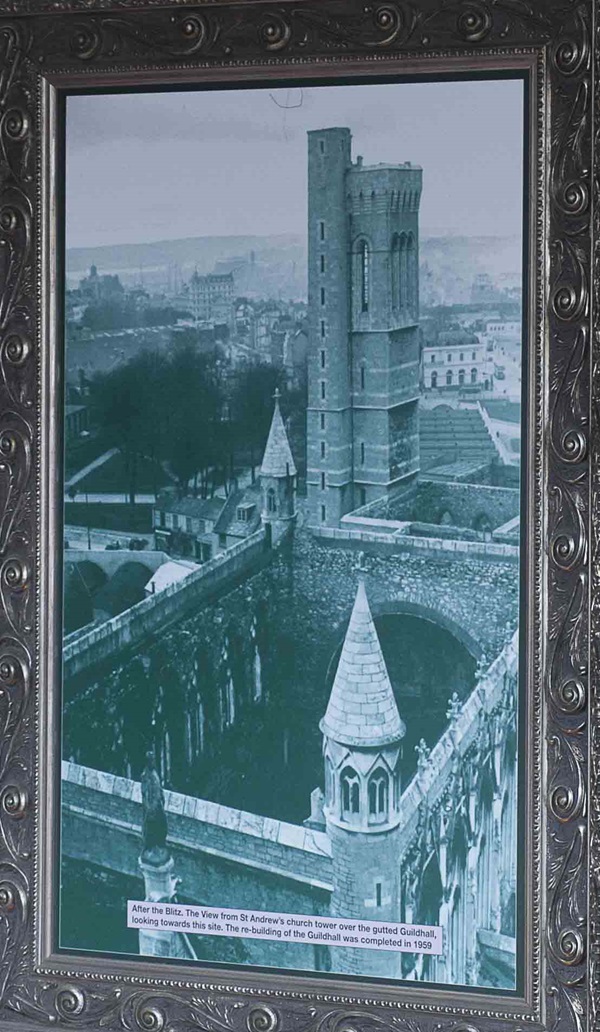
After the Blitz, the view from St Andrew’s church tower over the gutted Guildhall, looking towards this site. The re-building of the Guildhall was completed in 1959.
An illustration and text about Sir Francis Drake.
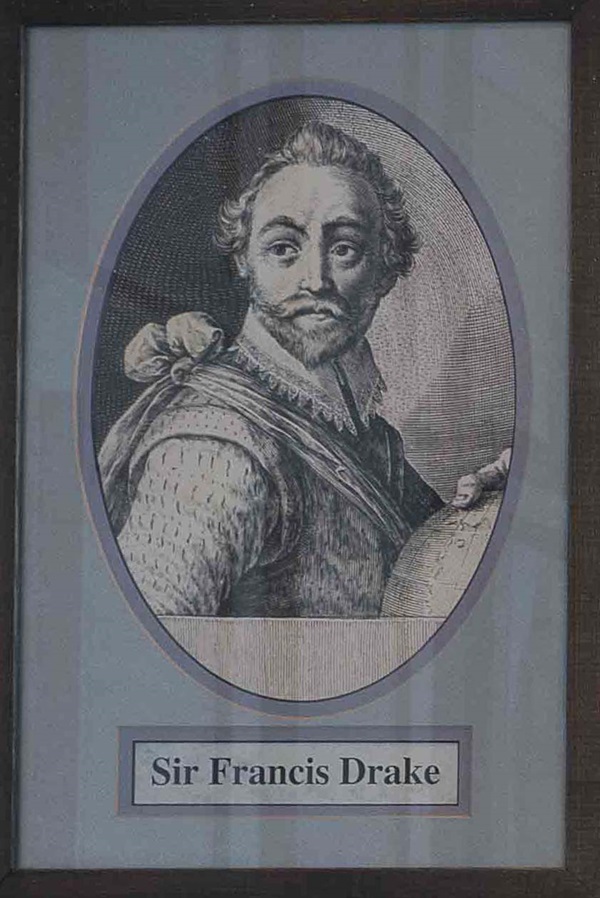
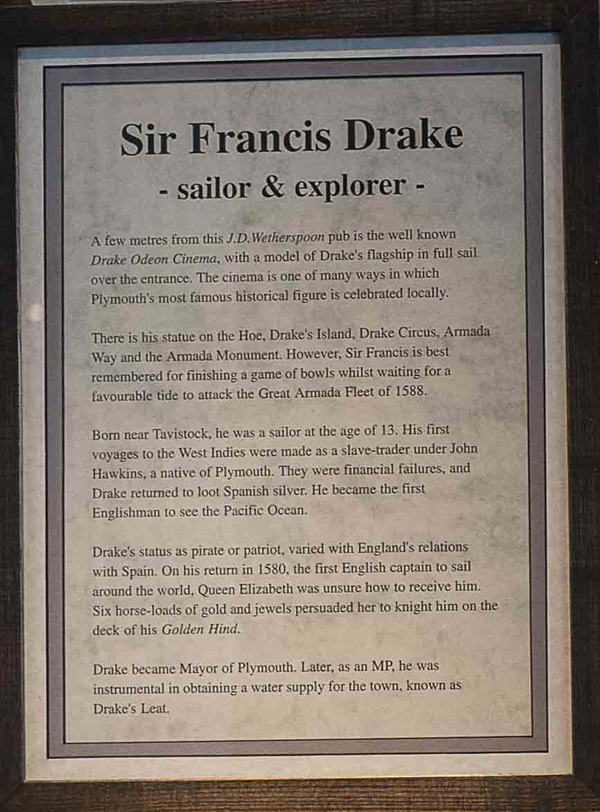
The text reads: A few metres from this J D Wetherspoon pub is the well-known Drake Odeon Cinema, with a model of Drake’s flagship in full sail over the entrance. The cinema is one of many ways in which Plymouth’s most famous historical figure is celebrated locally.
There is his statue on the Hoe, Drake’s Island, Drake Circus, Armada Way and the Armada Monument. However, Sir Francis is best remembered for finishing a game of bowls whilst waiting for a favourable tide to attack the Great Armada Fleet of 1588.
Born near Tavistock, he was a sailor at the age of 13. His first voyages to the West Indies were made as a slave-trader under John Hawkins, a native of Plymouth. They were financial failures, and Drake returned to loot Spanish silver. He became the first Englishman to see the Pacific Ocean.
Drake’s status as pirate or patriot, varied with England’s relations with Spain. On his return in 15580, the first English captain to sail around the world, Queen Elizabeth was unsure how to receive him. Six horse-loads of gold and jewels persuaded her to knight him on the deck of his Golden Hind.
Drake became mayor of Plymouth. Later, as an MP, he was instrumental in obtaining a water supply for the town, known as Drake’s Leat.
External photograph of the building - main entrance.
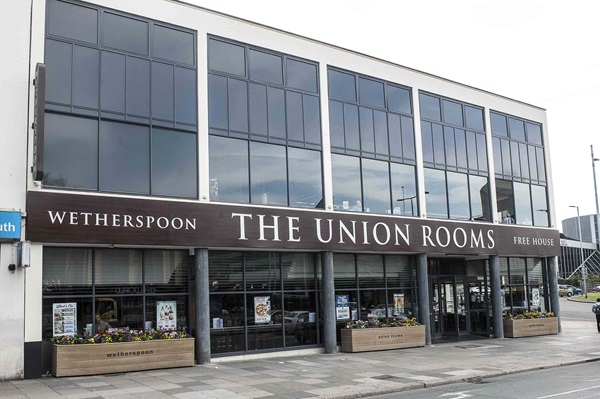
If you have information on the history of this pub, then we’d like you to share it with us. Please e-mail all information to: pubhistories@jdwetherspoon.co.uk